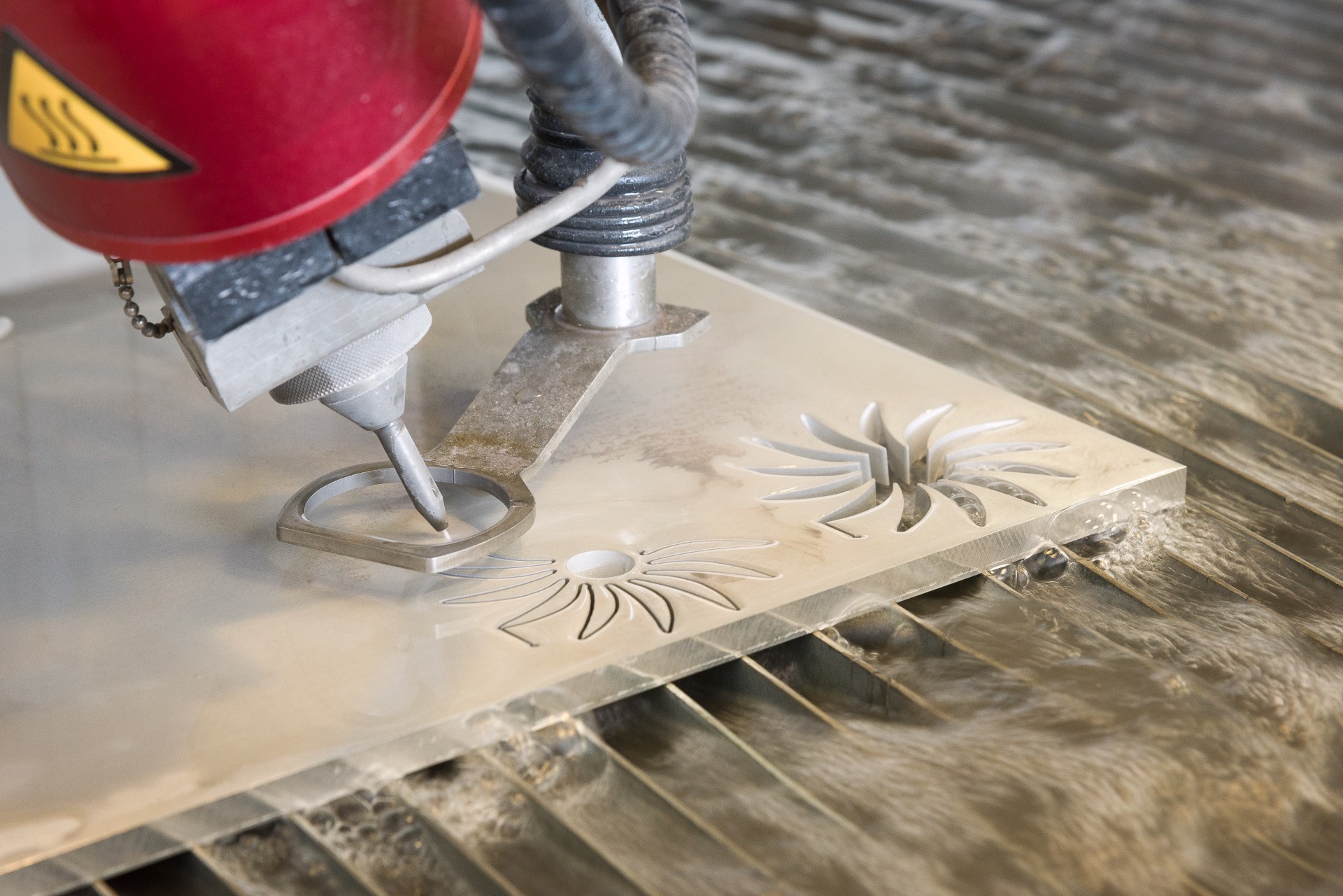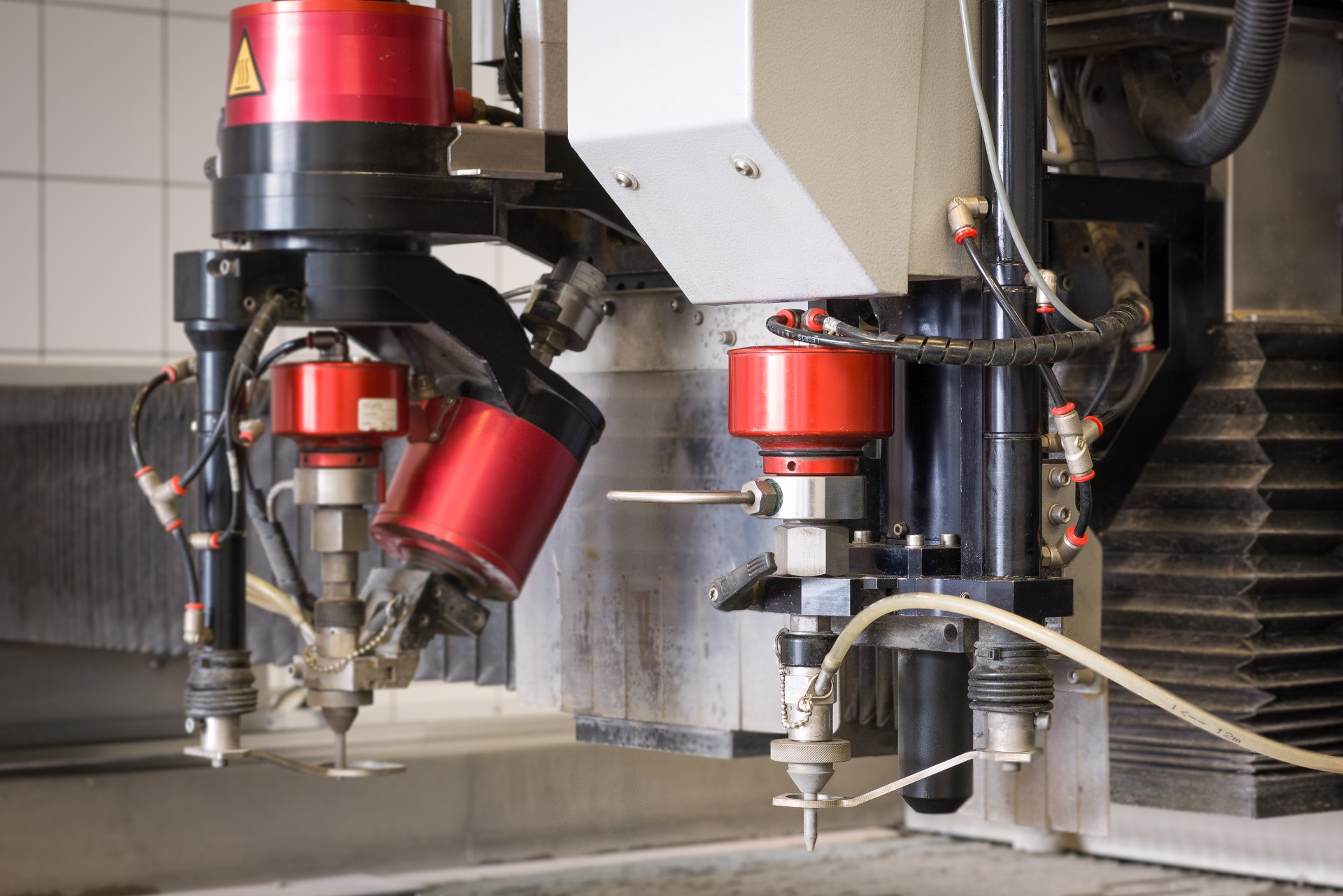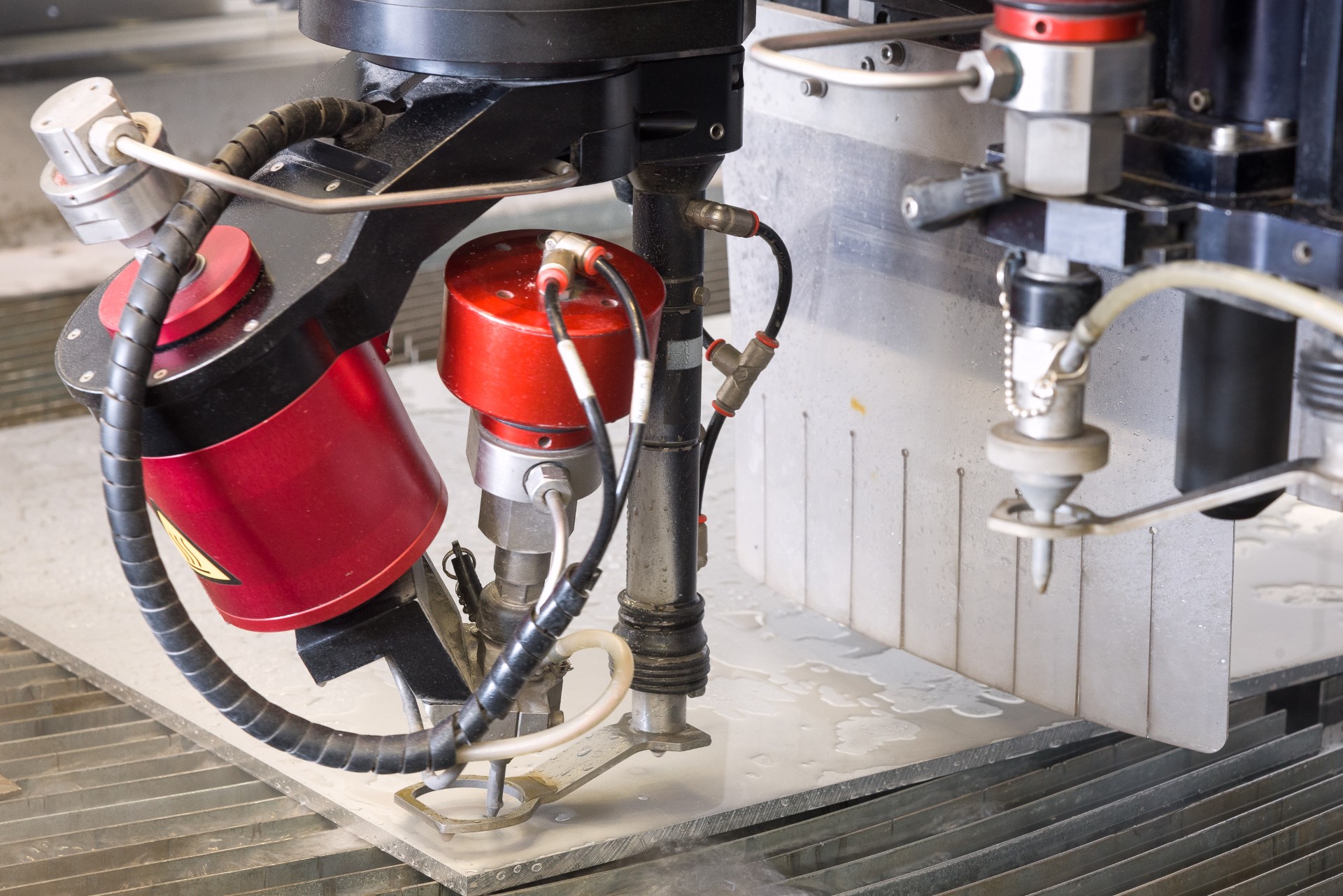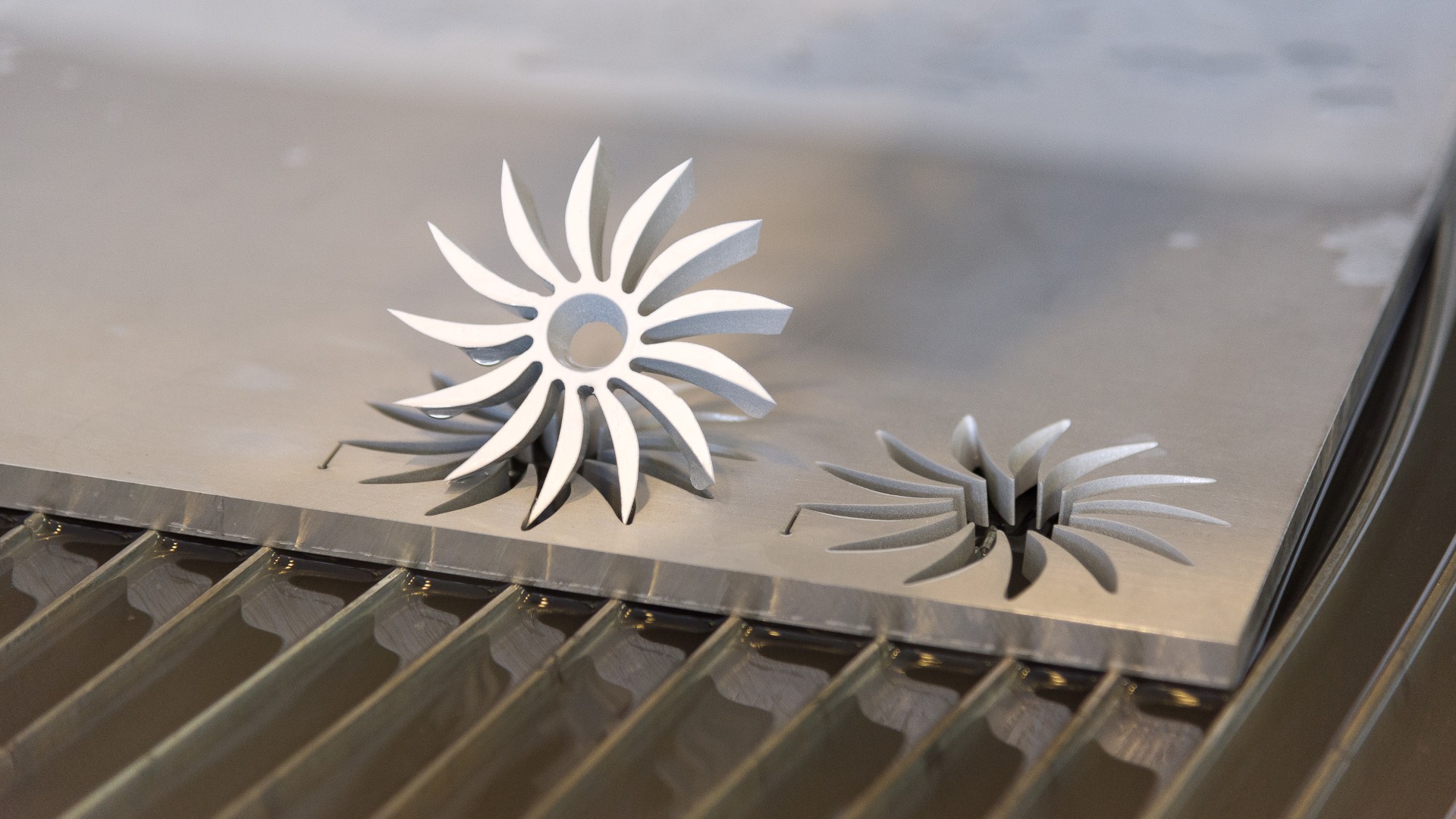
Metal Machining with Waterjet Systems: Advantages & Applications
Metal machining is a crucial process for a ton of industries. Since every cutting machine has its own advantages and disadvantages, there are unique applications where it excels.
The primary advantage of waterjet systems is the accuracy, combined with a heatless process. This allows for many items to be developed without the usual deformations that happen from CNC machining, plasma cutting, and even additive manufacturing methods like 3D printing. This unique selling proposition can allow for accurate cuts without compromising quality and requiring finishing.

Stainless Steel Cutting
Stainless steel abrasive waterjetting cuts stainless steel quickly, easily removing the need for many secondary processes. This allows for welding and cutting within the same workflow. The lack of heat-based deformation can be handy for medical equipment, marine technology, and structural components for construction, among many other purposes.
Compared to laser or plasma processes, waterjet creates thicker material cuts. The other two processes are restricted by thinner parts due to how they work. Stainless is reflective, so laser processes require a non-reflective film coating beforehand. Similarly, plasma systems cut materials at 32,5mm of thickness before losing force.
Resato waterjet systems can cut 200mm-thick stainless steel parts and require no pre-coating. It can be a great sheet metal cutting machine as well.
Stainless steel waterjetting is effective at cutting the following types of steel:
- Austenitic (300 series): Most common grades, including 304 and 316
- Ferritic (400 series): Including 409 and 430
- Martensitic: Types 410, 420, and 440
- Duplex grades: For high-corrosion environments
Titanium Cutting
Titanium is a famously difficult metal to cut, which is why many people question whether waterjet systems can cut titanium. Luckily, they can not just cut this high-strength metal, they are adept at processing multiple grades of titanium.
Resato waterjet systems can cut up to 200 millimetres of titanium. This makes it far more effective than many other cutting technologies, allowing for it to be used in jewelry, tennis rackets, smartphones, and a whole lot more.
An ideal metal cutting machine needs to be able to process multiple forms of titanium, including:
- Commercially Pure Titanium
- Titanium Grade 1
- Titanium Grade 2
- Titanium Grade 3
- Titanium Grade 4
- Titanium Grade 5
- Metastable β Type Titanium Alloy
- α type Titanium Alloy
- α + β Type Titanium Alloy
- β Type Titanium Alloy
Aluminium Cutting
Aluminium is one of the most widely used metals, providing so many of the amenities we take for granted every day. While many aluminium products are easier to produce with traditional methods and industrial processes, certain elements can definitely benefit from waterjetting. These include aerospace, architecture, marine technologies, and architectural components. Producing highly customisable facades, custom body panels for cars, and other elements is easier with waterjet. Waterjet is especially potent since it can cut any type of aluminium without heat and with precision.
Copper Cutting
Cutting copper with waterjet systems can yield many advantages, especially due to its precision. The level of details these systems provide can help cut electrical conductors, heat exchangers, industrial machinery, and custom copper components. Even aside from these, copper is used in customisable signage, logos, and other products we see every day.
While laser and plasma cutting can manage up to 40mm of thickness effectively, waterjet systems can go up to 150 millimetres. Waterjetting manages to preserve all of the properties of the material without warping, and at a moderate cost. It’s especially cost-effective compared to laser cutting technologies.
Types of copper waterjetting can cut include:
- C110 Copper
- C101 Copper
- Oxygen-Free Copper
- Brass (Copper-Zinc)
- Bronze (Copper-Tin)
- Beryllium Copper
- High Conductivity Copper
- Marine Grade Copper
- Recycled Copper
Brass Cutting
Waterjetting brass can produce some great results as it preserves the metal’s shape far better than heat-based systems. This can be a massive asset for producing musical instruments, where the shape and quality matter immensely. Similarly, it can help create plumbing components and architectural goods.
Waterjetting brass can handle thicknesses of up to 150 to 200mm at a moderate cost per item. Without the need for finishing, it can help cut down production times for a lot of products that would ordinarily require laborious post-processing.
Waterjet systems can cut many types of brass, including:
- Red brass
- Yellow brass
- Naval Brass (CuZn40Sn1)
- Leaded Brass (CuZn39Pb3)
- High-Zinc Beta Brass (CuZn15)
- Alpha-Beta Brass (CuZn40)
- Alpha Brass (CuZn)

Conclusion
Overall, waterjet systems are an ideal option for a machine to cut metal. To learn more about how Resato waterjet systems can help you, you can contact us directly.
